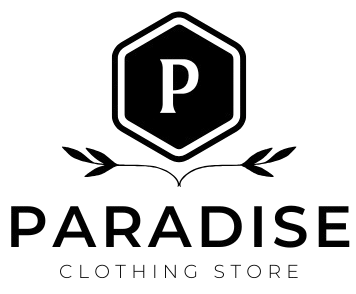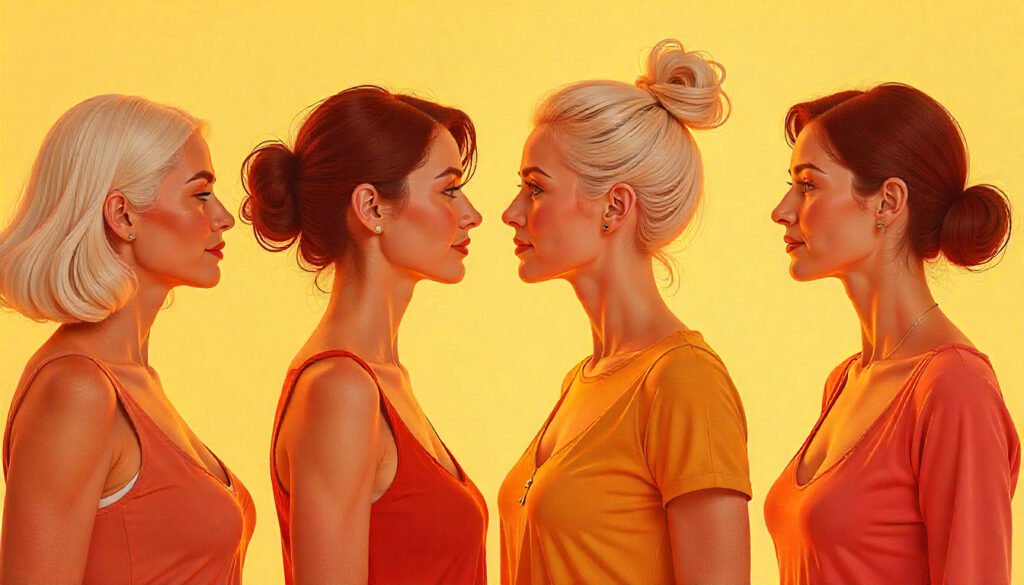Do Breasts Get Bigger As You Get Older? It’s Not What You Think
It’s a question whispered between friends, searched late at night, and quietly wondered during a glance in the mirror: Do breasts get bigger with age? Whether it’s a new fullness in your forties or a surprising change post-menopause, this curiosity is incredibly common — and surprisingly layered.
There’s a popular myth that aging itself causes breast size to increase, like some strange rite of passage. But the truth, like most things with the human body, is far more nuanced. Hormones shift, body composition evolves, and lifestyle changes play a bigger role than the candles on your birthday cake.
In this article, we’ll unpack what really happens to breasts across each stage of life — from puberty through post-menopause. We’ll explore how hormones, weight, and biology contribute to the changes you see (and feel), and bust some persistent myths along the way. Let’s separate fact from folklore and get honest about how age shapes the body — and what that really means for your breasts.
1. The Lifecycle of Breasts: Development Through the Decades
Breasts don’t just grow once and stay the same — they evolve, respond, and adapt throughout life. From hormonal fireworks in puberty to the quiet shifts of post-menopause, each stage writes a new chapter in your body’s story.
1.1. Puberty to Early Adulthood
It all begins with a surge. As estrogen and progesterone levels rise during puberty, breast tissue starts to form — often unevenly, sometimes dramatically. This development typically continues into the late teens or early twenties, though it doesn’t always follow a neat timeline.
By early adulthood, the structure settles — but don’t mistake that for permanence. Breasts remain dynamic. Hormonal fluctuations tied to your menstrual cycle, birth control, pregnancy, or breastfeeding can all cause temporary changes in size, shape, and sensitivity. They respond to your body’s rhythms like finely tuned instruments.
1.2. Your 40s and Perimenopause
Welcome to the hormonal rollercoaster. The 40s often bring a second wave of noticeable breast changes — not because of age itself, but due to the hormonal push-and-pull of perimenopause. Estrogen levels spike and dip unpredictably, sometimes causing breasts to feel fuller, lumpier, or more tender.
Add to that the common midlife weight gain, and many women notice their breasts appear bigger — but that size increase is usually tied to added fatty tissue, not glandular growth. The internal architecture of the breast begins to shift, with firmer glandular tissue gradually replaced by softer fat. This often makes breasts feel heavier or less perky than before.
1.3. Post-Menopause and Beyond
After menopause, estrogen levels plummet — and with them, some structural integrity. Glandular tissue continues to shrink, replaced by fat, and collagen loss reduces skin elasticity. The result? Breasts may appear flatter, softer, or sit lower on the chest.
For some, this transition leads to an apparent increase in breast size due to fat accumulation. For others, the loss of density makes them seem smaller or deflated. It’s less about “getting bigger” and more about redistribution — a reshaping of sorts. This phase varies widely, but one thing is clear: breasts continue to change long after puberty ends.
Absolutely — here’s Section 3: Breasts and Aging: Myths vs. Medical Reality, written with SPARKLE’s signature clarity and punch:
3. Breasts and Aging: Myths vs. Medical Reality
“Age Makes Breasts Bigger” — Dissecting the Myth
Let’s be clear: age alone doesn’t magically enlarge breasts. The idea that the passage of time inherently makes your chest expand is more fiction than fact. What does change with age are the factors that influence breast size — most notably, hormone levels and body fat distribution.
During perimenopause and menopause, a drop in estrogen leads to a shift in breast composition. Glandular tissue shrinks, and fatty tissue may increase — sometimes making breasts appear larger or softer. But the size change isn’t driven by age ticking forward — it’s a result of hormonal and metabolic changes that often coincide with aging.
Why Size Isn’t the Only (or Best) Indicator of Breast Health
It’s easy to fixate on size, especially in a culture obsessed with measurements. But breast health isn’t defined by cup size. Bigger doesn’t mean better — or worse. What matters more is change: sudden swelling, unexplained asymmetry, or unusual lumps deserve medical attention, no matter your age or bra size.
Regular self-exams, clinical screenings, and understanding your baseline are far more valuable than focusing on whether your breasts are growing or shrinking.
Firmness, Fullness, Sagging: What Really Changes
Breasts naturally evolve over time — and yes, that often includes sagging. As collagen and elastin decline, skin loses its bounce. Glandular tissue gives way to fat, and gravity takes its toll. This doesn’t mean your breasts are “worse” — they’re simply responding to the biology of aging.
What you might see in the mirror: less upper fullness, a lower position on the chest wall, and softer texture. These changes are normal, natural, and — with the right support and perspective — nothing to fear.
Of course — here’s Section 4: When Breast Changes Might Signal Something Else, composed with SPARKLE’s blend of clarity and care:
4. When Breast Changes Might Signal Something Else
What’s Considered Normal vs. Abnormal
Breasts are naturally dynamic — they shift with your cycle, respond to hormones, and evolve over time. Tenderness before a period? Normal. Slight size variation between breasts? Also normal. Even gradual changes in size, shape, or firmness as you age can be entirely typical.
But some changes are worth a closer look. If you notice rapid growth, dimpling, skin puckering, sudden asymmetry, or persistent pain, don’t brush it off. “Normal” breast changes tend to be gradual and cyclical; anything abrupt or unfamiliar should raise a red flag.
When to Talk to Your Doctor
The rule of thumb? If something feels off, get it checked out. You know your body better than anyone — and when a change feels new, persistent, or concerning, that’s enough reason to consult a professional.
Red flags include:
- A sudden increase or decrease in size (especially one-sided)
- A new lump or thickened area that doesn’t go away
- Nipple discharge (especially bloody or clear)
- Skin changes like dimpling, redness, or scaling
- Pain that’s localized and not related to your cycle
Your doctor may recommend a clinical breast exam, imaging (like a mammogram or ultrasound), or a referral to a specialist depending on your age and symptoms.
Conditions That Can Cause Sudden Size Changes
While hormonal shifts and weight changes are the most common culprits, there are medical conditions that can lead to unexpected breast enlargement or shrinkage:
- Cysts or fibroadenomas can temporarily alter shape or volume.
- Hormonal imbalances, such as thyroid issues, can impact breast tissue.
- Inflammatory breast cancer — though rare — can cause swelling, firmness, or skin changes.
- Gynecomastia in men (yes, it happens) is another example of how hormones affect breast tissue unexpectedly.
Medication side effects, particularly hormone therapies or certain antidepressants, may also cause changes in size or tenderness.
Conclusion
So, do breasts get bigger with age? Not exactly. The truth is more layered: it’s not age itself that changes your breasts, but the hormonal shifts, lifestyle changes, and body composition fluctuations that often come along for the ride.
What’s important isn’t chasing symmetry or size — it’s tuning into your body with awareness, not anxiety. Breasts are personal, dynamic, and beautifully unpredictable. No two people age the same way, and no two chests will follow the exact same path.
Whether yours grow, shrink, soften, or stay largely the same, remember: change doesn’t always mean something is wrong — it means you’re alive, evolving, and carrying the story of your body forward. Own it, check in with it, and most importantly, respect it.
You got it — here’s the full engagement suite for your blog post “Do Breasts Get Bigger with Age?” — designed to captivate, convert, and keep your audience scrolling. SPARKLE-style, of course. 💫
✅ 8 FAQs to Add at the End of the Post (SEO + UX Boost)
- Can breast size increase after menopause?
Yes — for some women, increased fat in breast tissue can make breasts appear larger post-menopause, though they often become softer or less full. - Is it normal for one breast to be larger than the other as I age?
Absolutely. Breast asymmetry is common and may become more noticeable with age due to uneven tissue changes or fat distribution. - Does weight gain always make your breasts bigger?
Often, yes. Since breasts contain fatty tissue, weight gain can lead to an increase in breast size — but it varies by body type. - Can exercise affect breast size?
Not directly, but building muscle under the breast (like the pectorals) can enhance lift and shape. Significant fat loss may reduce breast size. - Why do breasts sag with age?
Sagging is caused by a loss of skin elasticity and changes in connective tissue, often due to reduced collagen and estrogen levels. - Should I be concerned if my breasts suddenly get larger?
A rapid or unexplained change in breast size (especially if it’s one-sided) should be checked by a healthcare provider. - Do bras prevent breasts from sagging as I age?
Bras offer support but don’t prevent natural sagging. Genetics, gravity, and tissue changes have more influence.
Are there medical conditions that cause breast enlargement?
Yes — hormonal imbalances, certain medications, and conditions like cysts or tumors can all affect breast size.

